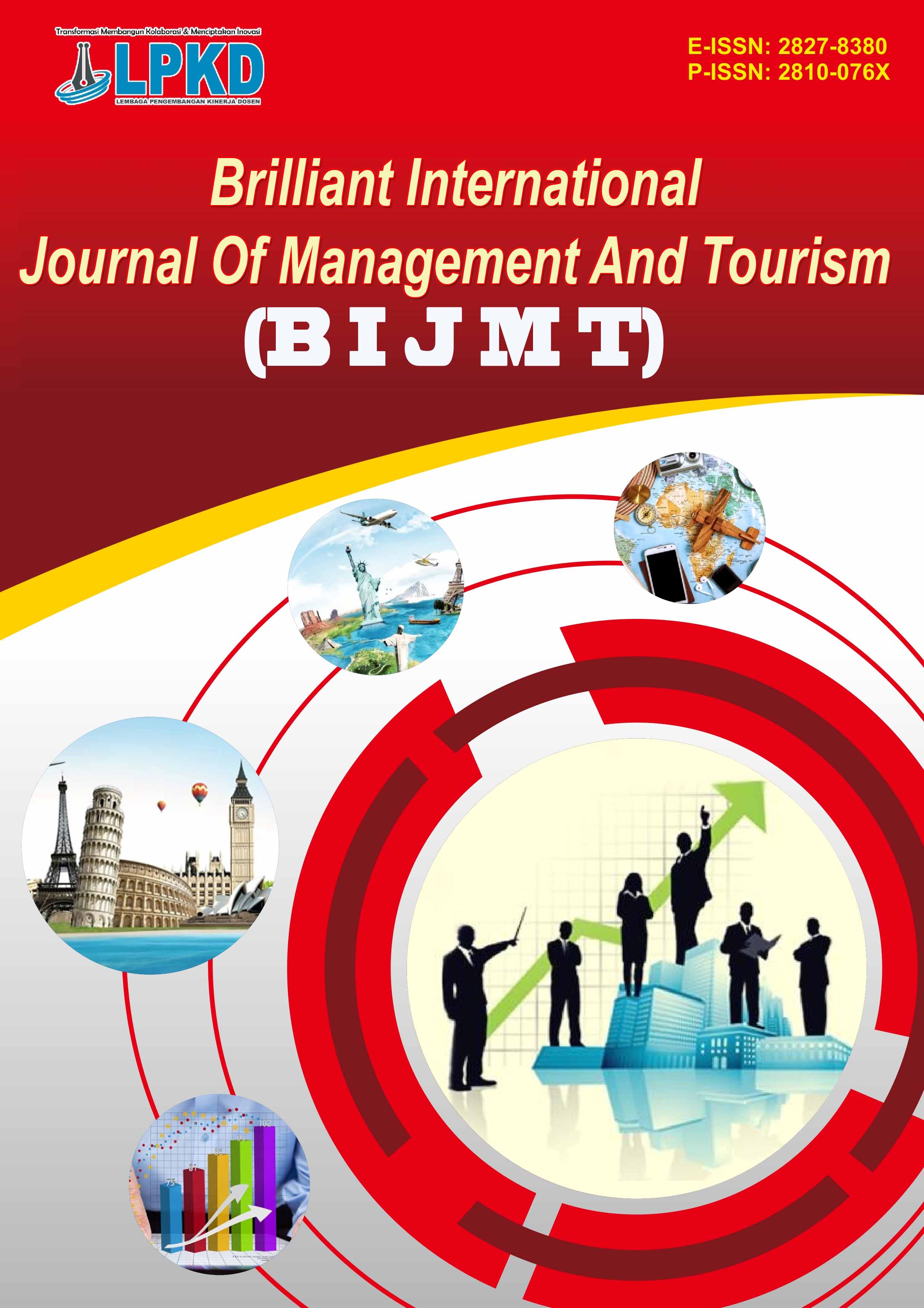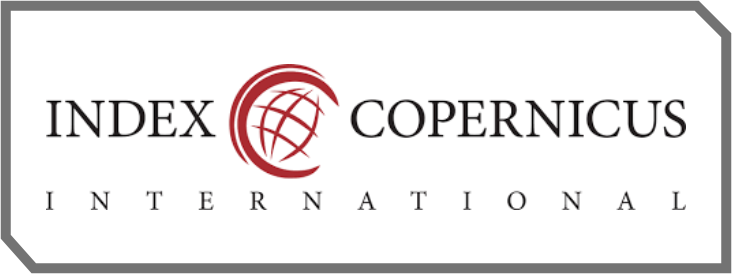Tourist Narratives on Authenticity of Experience at Agro-tourism Destinations: A Phenomenological Study from an Eco-Spiritual Perspective at Sukomakmur Agrotourism
DOI:
https://doi.org/10.55606/bijmt.v5i3.5551Keywords:
Agrotourism, Authenticity, Eco-spirituality, Phenomenology, Sustainable tourismAbstract
This phenomenological study explores tourists' narratives and perceptions regarding the authenticity of experiences at Sukomakmur Agrotourism, Magelang, through an eco-spiritual lens. Agrotourism has evolved beyond agricultural education to encompass cultural, spiritual, and ecological dimensions, yet empirical studies on how tourists narrate authenticity in Indonesian agrotourism contexts remain limited. Using in-depth interviews with 15 tourists and participatory observation over three months (July-October 2025), the research employed interpretative phenomenological analysis to identify emerging patterns in tourists' authentic experiences. The research reveals that authenticity is interpreted through three interconnected dimensions: physical authenticity manifested through natural landscape and farming activities, cultural authenticity expressed through local wisdom and community interactions, and spiritual authenticity experienced through contemplative moments and transcendental connection with nature. Tourists describe experiencing profound connectedness, personal reflection, and transformative insights influenced by local wisdom and the religious-cultural milieu. The integration of eco-spiritual values significantly enhances tourist experience quality, creating memorable and meaningful encounters. The findings suggest that integrating eco-spiritual values can be a distinguishing element for sustainable agrotourism development, offering theoretical contributions to authenticity literature and practical guidance for destination management in creating transformative tourism experiences.
References
Ajmal, M. M., Khan, M., Hussain, M., & Helo, P. (2018). Conceptualizing and incorporating social sustainability in the business world. International Journal of Sustainable Development and World Ecology, 25(4), 327–339. https://doi.org/10.1080/13504509.2017.1408714
Alam, J., Alam, Q. N., & Kalam, A. (2022). Prospects and challenges for sustainable tourism: Evidence from South Asian countries. International Journal of Multidisciplinary Research and Technology, 3(9), 19–42.
Anderson, E. N. (2011). Bron Taylor, Dark green religion: Nature spirituality and the planetary future (Berkeley: University of California Press, 2010), xiv + 338 pp., $24.95 (pbk), ISBN: 978-0-520-26100-6. Review doi:10.1558/jsrnc.v5i2.244. Journal for the Study of Religion, Nature and Culture, 5(2), 244–245. https://doi.org/10.1558/jsrnc.v5i2.244
Azmira, R. T., & Nurcahyanto, H. (2024). Strategi perencanaan pengembangan Desa Wisata Terasering Sittenggong di Dusun Nampan Desa Sukomakmur Kecamatan Kajoran Kabupaten Magelang. Jurnal Administrasi Publik.
Bevan, M. T. (2014). A method of phenomenological interviewing. Qualitative Health Research, 24(1), 136–144. https://doi.org/10.1177/1049732313519710
Breiby, M. A., & Slåtten, T. (2018). The role of aesthetic experiential qualities for tourist satisfaction and loyalty. International Journal of Culture, Tourism, and Hospitality Research, 12(1), 1–14. https://doi.org/10.1108/IJCTHR-07-2017-0082
Cao, E., Chong, K. M., Pan, L., Ning, L., Pan, F. (D.), & Li, K. (K.). (2024). Oh I remember the beauty and aesthetics of Guilin!: Exploring the implications of memorability on tourist loyalty through a two-wave panel data. Heliyon, 10(1), e23365. https://doi.org/10.1016/j.heliyon.2023.e23365
Cohen, E. (1988). Authenticity and commoditization in tourism. Annals of Tourism Research, 15(3), 371–386. https://doi.org/10.1016/0160-7383(88)90028-X
Cohen, E., & Cohen, S. A. (2012). Authentication: Hot and cool. Annals of Tourism Research, 39(3), 1295–1314. https://doi.org/10.1016/j.annals.2012.03.004
Cong, G., Zhang, H., & Chen, T. (2022). A study on the perception of authenticity of tourist destinations and the place attachment of potential tourists—The case of Ding Zhen’s endorsement of Ganzi, Sichuan. Sustainability, 14(12), 7151. https://doi.org/10.3390/su14127151
Darcy, S., McKercher, B., & Schweinsberg, S. (2020). From tourism and disability to accessible tourism: A perspective article. Tourism Review, 75(1), 140–144. https://doi.org/10.1108/TR-07-2019-0323
Flanigan, S., Blackstock, K., & Hunter, C. (2015). Generating public and private benefits through understanding what drives different types of agritourism. Journal of Rural Studies, 41, 129–141. https://doi.org/10.1016/j.jrurstud.2015.08.002
Guerra, T., Pacheco, M. P. M., Almeida, A. S. A. de, & Vitorino, L. C. (2022). Authenticity in industrial heritage tourism sites: Local community perspectives. European Journal of Tourism Research, 32, 1–26. https://doi.org/10.54055/ejtr.v32i.2379
Heintzman, P. (2010). Nature-based recreation and spirituality: A complex relationship. Leisure Sciences, 32(1), 72–89. https://doi.org/10.1080/01490400903430897
Ives, C. D., Kidwell, J. H., Anderson, C. B., Arias-Arévalo, P., Gould, R. K., Kenter, J. O., & Murali, R. (2024). The role of religion in shaping the values of nature. Ecology and Society, 29(2), 10. https://doi.org/10.5751/ES-15004-290210
Jenkins, W., & Chapple, C. K. (2011). Religion and environment. Annual Review of Environment and Resources, 36, 441–463. https://doi.org/10.1146/annurev-environ-042610-103728
Kong, W., Kong, J., Lyu, H., Ma, J., Wang, Z., Zhang, Z., Feng, S., & Shen, B. (2022). Application of indole-3-acetic acid in microalgae cultivation to improve the feasibility of simultaneously purifying wastewater, fixing CO₂ and producing fatty acids under Hg stress. Journal of Cleaner Production, 358, 132028. https://doi.org/10.1016/j.jclepro.2022.132028
Lehto, X., Luo, W., Miao, L., & Ghiselli, R. F. (2018). Shared tourism experience of individuals with disabilities and their caregivers. Journal of Destination Marketing & Management, 8, 185–193. https://doi.org/10.1016/j.jdmm.2017.04.001
Lever, M. W., Elliot, S., & Joppe, M. (2023). Pride and promotion: Exploring relationships between national identification, destination advocacy, tourism ethnocentrism and destination image. Journal of Vacation Marketing, 29(4), 537–554. https://doi.org/10.1177/13567667221109270
Ling, Q., Lin, M., & Wu, X. (2016). The trickle-down effect of servant leadership on frontline employee service behaviors and performance: A multilevel study of Chinese hotels. Tourism Management, 52, 341–368. https://doi.org/10.1016/j.tourman.2015.07.008
Neubauer, B. E., Witkop, C. T., & Varpio, L. (2019). How phenomenology can help us learn from the experiences of others. Perspectives on Medical Education, 8(2), 90–97. https://doi.org/10.1007/s40037-019-0509-2
Nguyen, T. Q. T., Young, T., Johnson, P., & Wearing, S. (2019). Conceptualising networks in sustainable tourism development. Tourism Management Perspectives, 32, 100575. https://doi.org/10.1016/j.tmp.2019.100575
Nizza, I. E., Farr, J., & Smith, J. A. (2021). Achieving excellence in interpretative phenomenological analysis (IPA): Four markers of high quality. Qualitative Research in Psychology, 18(3), 369–386. https://doi.org/10.1080/14780887.2020.1854404
Parks, P. (2020). Is climate change a crisis—and who says so? An analysis of climate characterization in major U.S. news media. Environmental Communication, 14(1), 82–96. https://doi.org/10.1080/17524032.2019.1611614
Ram, Y., Björk, P., & Weidenfeld, A. (2016). Authenticity and place attachment of major visitor attractions. Tourism Management, 52, 110–122. https://doi.org/10.1016/j.tourman.2015.06.010
Reindrawati, D. Y., Noviyanti, U. D. E., & Young, T. (2022). Tourism experiences of people with disabilities: Voices from Indonesia. Sustainability, 14(20), 13310. https://doi.org/10.3390/su142013310
Richards, G. (2020). Designing creative places: The role of creative tourism. Annals of Tourism Research, 85, 102922. https://doi.org/10.1016/j.annals.2020.102922
Rickly, J. M. (2022). A review of authenticity research in tourism: Launching the Annals of Tourism Research curated collection on authenticity. Annals of Tourism Research, 92, 103349. https://doi.org/10.1016/j.annals.2021.103349
Rickly, J., & Canavan, B. (2024). The emergence of authenticity: Phases of tourist experience. Annals of Tourism Research, 109, 103844. https://doi.org/10.1016/j.annals.2024.103844
Schweinsberg, S., & Fennell, D. (2024). Space tourism: A historical and existential perspective. Sustainability, 16(1), 79. https://doi.org/10.3390/su16010079
Sideris, L. H. (2010). Dark green religion: Nature, spirituality, and the planetary future [Book review]. Journal of the American Academy of Religion, 78(3), 865–869. https://doi.org/10.1093/jaarel/lfq043
Sloan, A., & Bowe, B. (2014). Phenomenology and hermeneutic phenomenology: The philosophy, the methodologies, and using hermeneutic phenomenology to investigate lecturers' experiences of curriculum design. Quality & Quantity, 48(3), 1291–1303. https://doi.org/10.1007/s11135-013-9835-3
Stacey, T. (2024). Religious repertoires of sustainability: Why religion is central to sustainability transitions, whatever you believe. Environmental Innovation and Societal Transitions, 50, 100821. https://doi.org/10.1016/j.eist.2024.100821
Streimikiene, D., Svagzdiene, B., Jasinskas, E., & Simanavicius, A. (2021). Sustainable tourism development and competitiveness: The systematic literature review. Sustainable Development, 29(1), 259–271. https://doi.org/10.1002/sd.2133
Stuckrad, K. von. (2022). Bron Taylor’s Dark green religion after twelve years. Aяgos. https://doi.org/10.26034/fr.argos.2022.3563
Taylor, B. (2020). Retrospective: Dark green religion: A decade later. Journal for the Study of Religion, Nature and Culture, 14(4), 496–510. https://doi.org/10.1558/jsrnc.34630
Tuffour, I. (2017). A critical overview of interpretative phenomenological analysis: A contemporary qualitative research approach. Journal of Healthcare Communications, 2(4), 93. https://doi.org/10.4172/2472-1654.100093
Tulasi, E. E., Ashiaby, O. E., Kodua, P., Ahlijah, B., & Agyeman-Duah, M. O. (2024). The role of aesthetics in tourist satisfaction in the Ghanaian hospitality industry. Heliyon, 10(12), e32944. https://doi.org/10.1016/j.heliyon.2024.e32944
Volo, S. (2021). The experience of emotion: Directions for tourism design. Annals of Tourism Research, 86, 103097. https://doi.org/10.1016/j.annals.2020.103097
Wang, N. (1999). Rethinking authenticity in tourism experience. Annals of Tourism Research, 26(2), 349–370. https://doi.org/10.1016/S0160-7383(98)00103-0
Yang, W., Chen, Q., Huang, X., Xie, M., & Guo, Q. (2022). How do aesthetics and tourist involvement influence cultural identity in heritage tourism? The mediating role of mental experience. Frontiers in Psychology, 13, 990030. https://doi.org/10.3389/fpsyg.2022.990030
Yen, C.-H., Tsaur, S.-H., & Tsai, C.-H. (2023). Service redundancy: Scale development and validation. International Journal of Hospitality Management, 110, 103430. https://doi.org/10.1016/j.ijhm.2023.103430
Yi, X., Fu, X., Lin, B., & Sun, J. (2024). Authenticity, identity, self-improvement, and responsibility at heritage sites: The local residents' perspective. Tourism Management, 102, 104875. https://doi.org/10.1016/j.tourman.2023.104875
Zahavi, D. (2021). Applied phenomenology: Why it is safe to ignore the epoché. Continental Philosophy Review, 54(2), 259–273. https://doi.org/10.1007/s11007-019-09463-y
Zhang, T., Yin, P., & Peng, Y. (2021). Effect of commercialization on tourists’ perceived authenticity and satisfaction in the cultural heritage tourism context: Case study of Langzhong Ancient City. Sustainability, 13(12), 6847. https://doi.org/10.3390/su13126847
Zhao, Y., Liu, H., Yin, Z., & Zou, J. (2024). Perceived authenticity and place attachment among mountain tourists: A case study exploration in the Gaoligong Mountain in Southwest China. International Journal of Business Anthropology, 14(2). https://doi.org/10.33423/ijba.v14i2.7479
Downloads
Published
How to Cite
Issue
Section
License
Copyright (c) 2025 Brilliant International Journal Of Management And Tourism

This work is licensed under a Creative Commons Attribution-ShareAlike 4.0 International License.











